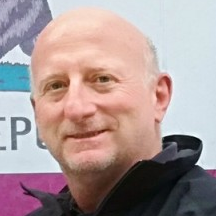Advanced Technologies and Perspectives in Wastewater Agricultural Reuse
A special issue of Water (ISSN 2073-4441). This special issue belongs to the section "Wastewater Treatment and Reuse".
Deadline for manuscript submissions: closed (31 December 2021) | Viewed by 32359
Special Issue Editors
Interests: wastewater reuse; water treatment; irrigation; micrometeorology; evapotranspiration; eddy covariance; remote sensing
Special Issue Information
Dear colleagues,
The use of non-conventional waters like urban wastewater (WW) constitutes an important solution for promoting and enhancing sustainable water use and overcoming drought and water scarcity, particularly in the case of agricultural use (agriculture accounts for more than 80% of the total water consumption). Wastewater reuse perfectly matches “Sustainable Development Goal # 6: Ensure Availability and Sustainable Management of Water and Sanitation for All”, but until now the potential of WW has not been fully exploited. The reuse of WW for agriculture also provides considerable inputs of required nutrients for plants and reduces their discharge on sensitive surface waters. Among institutional and socioeconomic causes, a key drawback for diffusing the agricultural reuse practice of WW and its public acceptance is the absence of a common regulation at international level, leading, in many cases, to inhomogeneous quality standards and fairness issues.
The main included themes in this Special Issue include but are not limited to the following:
- Wastewater treatment options for agricultural reuse;
- The role of natural treatment system for WW reuse in agriculture;
- Technological aspects of micro-irrigation systems for WW reuse;
- Effects of wastewater reuse on soil-plant systems;
- Case studies on reclaimed water use for agriculture;
- Legislative barriers to the use of reclaimed water in agriculture;
- Wastewater reuse policy;
- Monitoring of wastewater reuse systems.
- Public acceptance and public perception of wastewater reuse.
Prof. Simona Consoli
Prof. Giuseppe Luigi Cirelli
Guest Editors
Manuscript Submission Information
Manuscripts should be submitted online at www.mdpi.com by registering and logging in to this website. Once you are registered, click here to go to the submission form. Manuscripts can be submitted until the deadline. All submissions that pass pre-check are peer-reviewed. Accepted papers will be published continuously in the journal (as soon as accepted) and will be listed together on the special issue website. Research articles, review articles as well as short communications are invited. For planned papers, a title and short abstract (about 100 words) can be sent to the Editorial Office for announcement on this website.
Submitted manuscripts should not have been published previously, nor be under consideration for publication elsewhere (except conference proceedings papers). All manuscripts are thoroughly refereed through a single-blind peer-review process. A guide for authors and other relevant information for submission of manuscripts is available on the Instructions for Authors page. Water is an international peer-reviewed open access semimonthly journal published by MDPI.
Please visit the Instructions for Authors page before submitting a manuscript. The Article Processing Charge (APC) for publication in this open access journal is 2600 CHF (Swiss Francs). Submitted papers should be well formatted and use good English. Authors may use MDPI's English editing service prior to publication or during author revisions.






